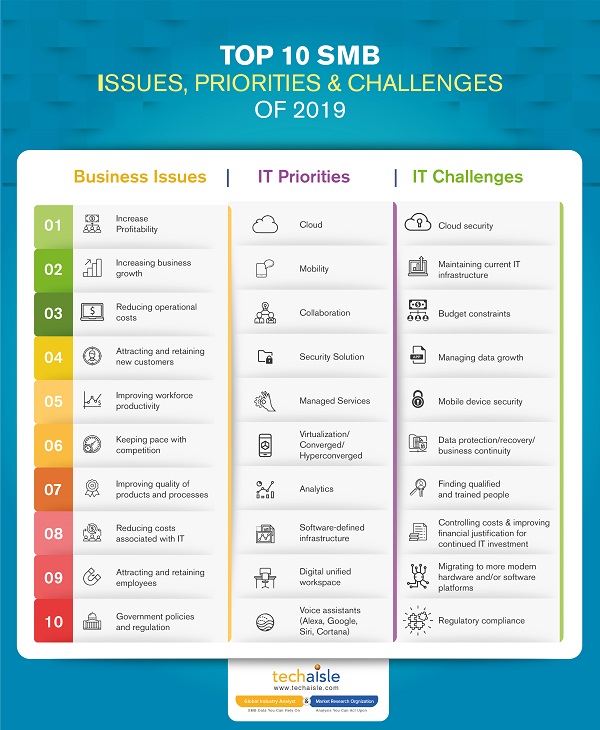The IT industry is abuzz with discussion of Artificial Intelligence (AI) and blockchain. Both AI and blockchain are currently aspirational within SMBs and Midmarket firms. It is not because these firms are not open to the technologies but they have limited understanding of deployment processes.
Regardless of the aspirational nature, both the technologies are showing a very promising adoption trends within midmarket firms. Techaisle’s survey research of 1100 US firms shows that 26% of midmarket firms are currently using AI and another 28% plan to deploy within the next one year. If they stick to the plan, by mid-2020, over 50% of firms will have at least either begun trials or accomplished full deployment of AI within their organizations.
Similarly, blockchain adoption shows an important trend. Although, less than 1/5th of midmarket firms are currently using the technology, a full 40% do plan to adopt blockchain within the year. In fact, when the two datasets are combined, data shows that 42% are currently experimenting and another 42% are developing protypes. Drilling down into the data we find that 26% of midmarket firms are seriously investigating the possibility of implementing blockchain.
In contrast to midmarket’s current and planned adoption of artificial intelligence, only 5% of small businesses are currently using artificial intelligence and 10% of small businesses which are planning to deploy AI are conducting trials.
Not only is the adoption trend different between small and midmarket businesses, the expected benefits and application usages also differ. For example, 38% of small businesses believe that use of AI in marketing / advertising and 32% in improving customer experiences will be integral to their business success whereas 43% of midmarket firms believe that use of AI in process automation and 42% in improving analytics will be integral to their business success. Nevertheless, one-third of both small and midmarket firms believe that use of AI in cybersecurity will be essential for improved security.
Identical percentage, 54% of US small and midmarket businesses agree that artificial intelligence refers to a system consisting of a series of algorithms that can learn from constant inputs. 45% of small businesses and 46% of midmarket firms aspire to use AI for automating IT and a similar percentage plan to initially use AI for non-core processes and applications.
Artificial intelligence adoption within SMBs is at a stage where cloud was a decade ago. Visibly absent within small businesses but notably present within midmarket firms. However, it is not a question of when AI adoption will take firm root but how. The responsibility lies with the vendors and other suppliers for guidance, deployment alacrity and outcomes.












